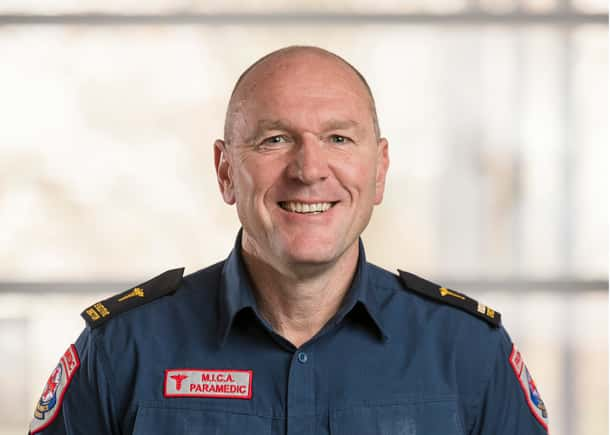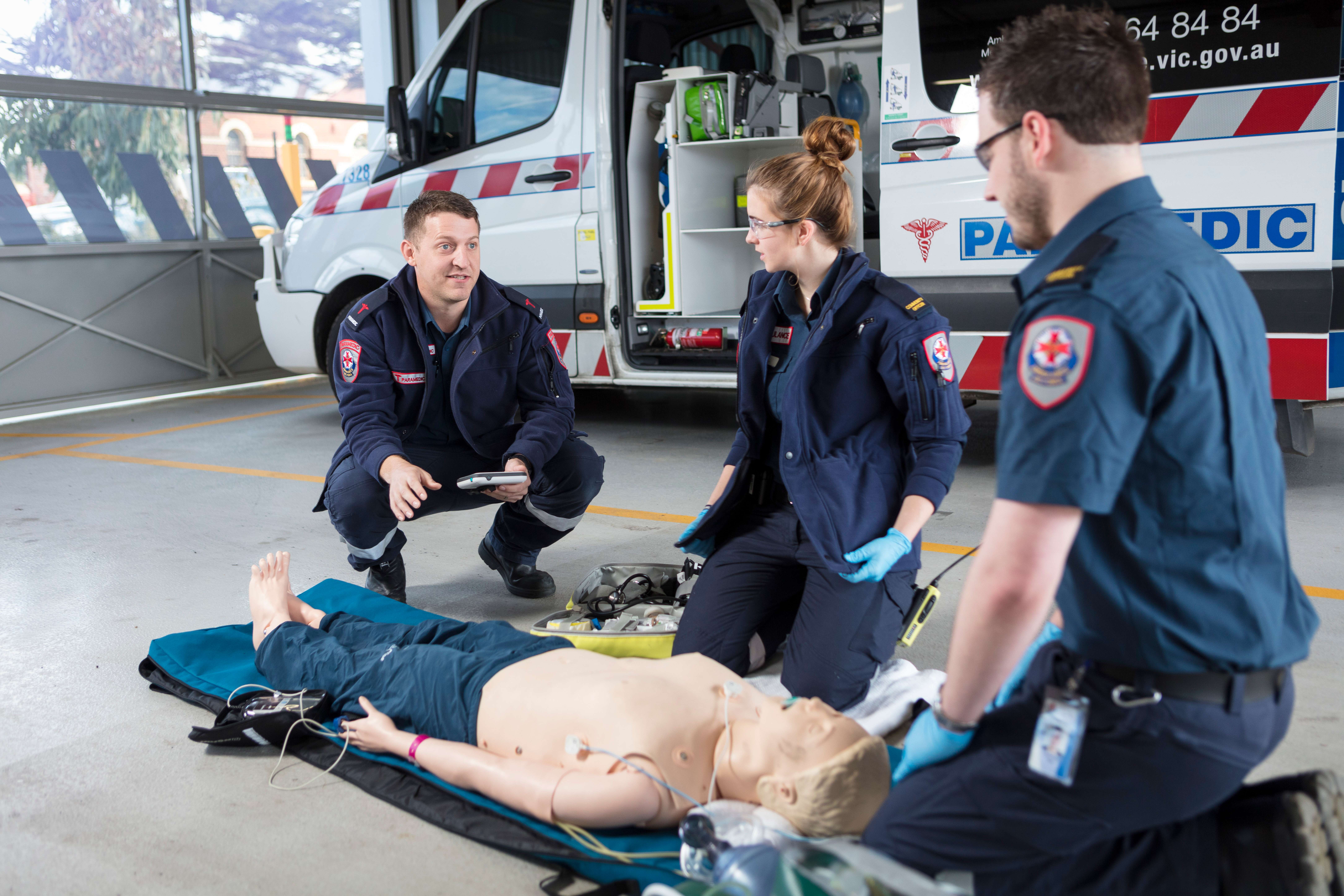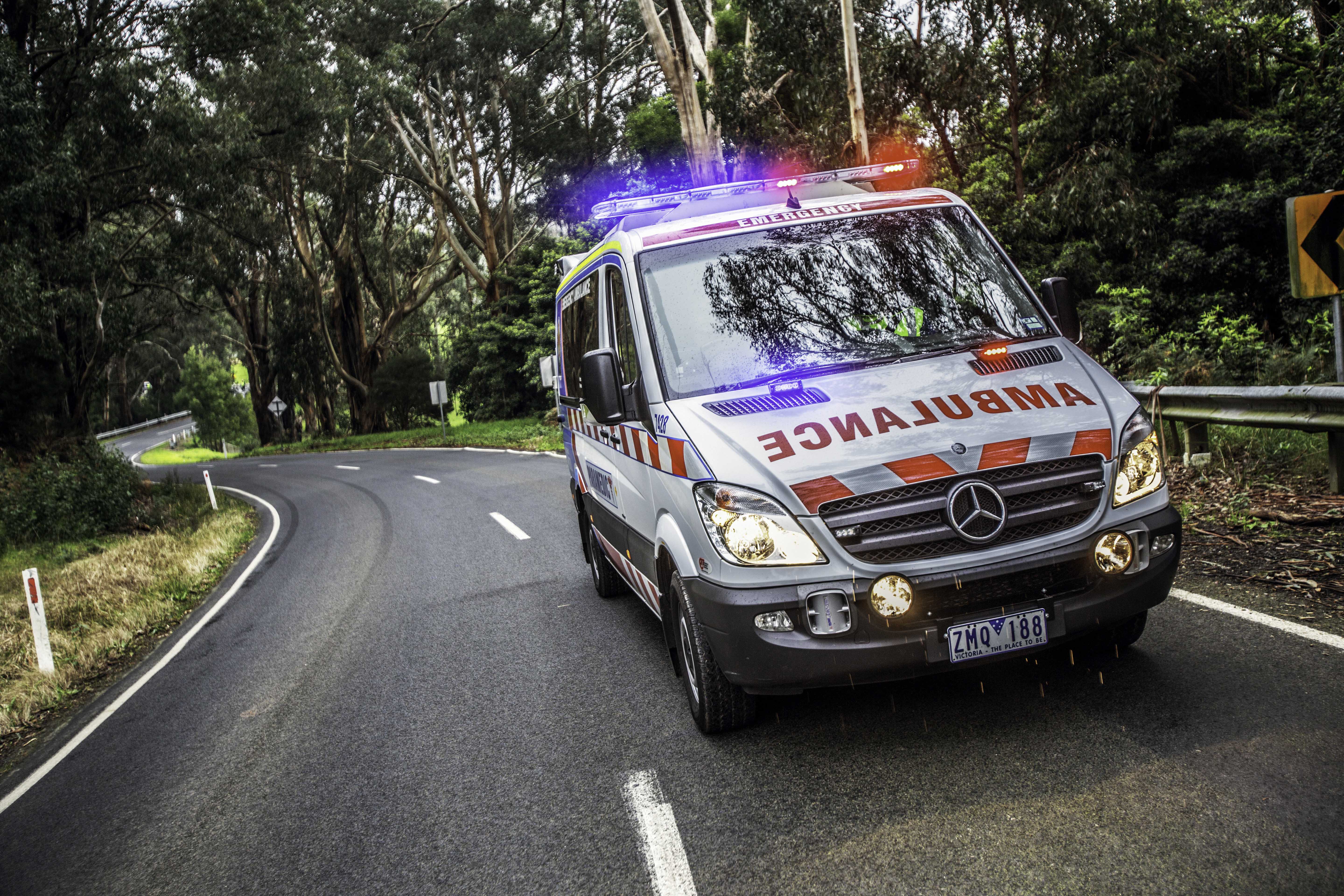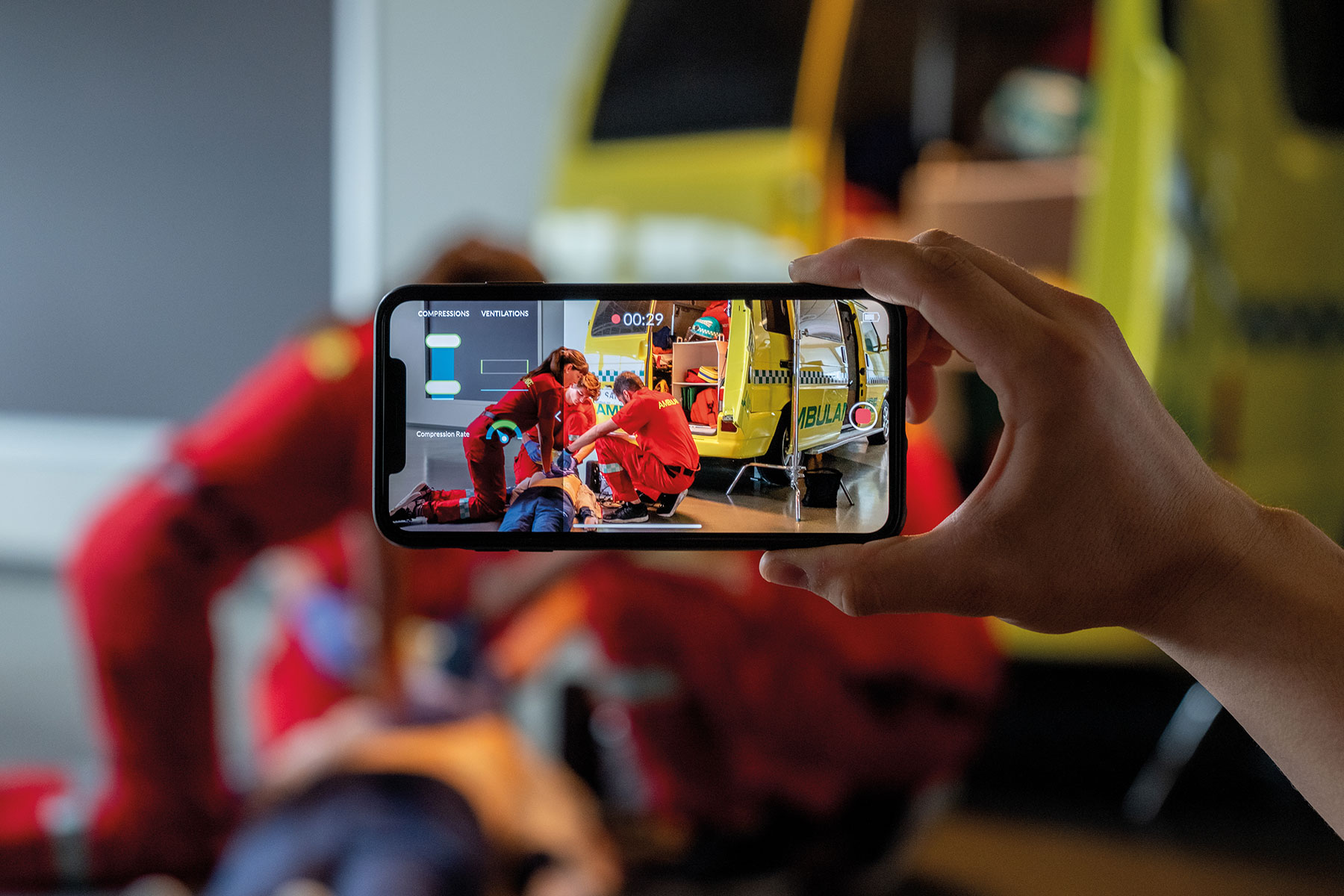Q&A
How high-performance CPR saves more lives
Mick Stephenson
Ambulance Victoria

How high-performance CPR saves more lives

Mick Stephenson, Executive Director Clinical Operations Ambulance Victoria and Associate Professor in the departments of Epidemiology and Preventive Medicine, and Paramedicine at Monash University, talks about his vast experience with HP-CPR and what he calls a gamechanger in improving outcomes.
How are you involved with high-performance CPR training and/or ongoing quality improvement initiatives?
I am responsible for the oversight of the operational workforce at Ambulance Victoria, contributed to the design of the AV HP-CPR program and I am responsible, as part of our cardiac arrest governance committee, for the monitoring of cardiac arrest performance and outcomes.
What’s your favourite part about CPR training with individuals and teams?
The enthusiasm with which our staff approached the training was the highlight of the roll out. The concept was embraced wholeheartedly, and everyone was engaged in the concept of ‘pit crew’ like teamwork. Our staff were genuinely enthusiastic to improve outcomes for our patients.

Throughout your career, what changes have you witnessed in how HP-CPR training is administered? How has the technology improved?
Our approach to CPR has changed markedly. 25 years ago, resuscitation from cardiac arrest was marred by low rates of bystander CPR, very few AEDs being used prior to ambulance arrival, slow rates (60/min ECC), long ECC pauses for defibrillation, no standardised post resuscitation guidelines (and tolerance of very low post ROSC BP) and no case specific feedback. Changes in all of these has seen survival improve dramatically.
Post event debriefing with Team performance reports: We now provide feedback on 19 key metrics, including CPR quality (depth, rate, chest compression fraction) for all adult medical cardiac arrests. The feedback is enthusiastically received and should prove a gamechanger in improving outcomes.
Feedback pads providing real time feedback during resuscitation as well as during training improves the consistency of our practice and will as far as is possible see that all patients get the best care possible at this time.
The advent of the Victorian Cardiac Arrest Registry, conceived and overseen by our talented Research and Evaluation team, has been a godsend in enabling us to measure and improve our cardiac arrest performance and outcomes.
The coronavirus (COVID-19) was an unprecedented event. How has COVID-19 affected how teams respond to cases of cardiac arrest?
COVID (PPE use) has slowed down our response to first defibrillation (2 mins) and other critical interventions. Bystander CPR rates remain unchanged but the number of arrests in public places has halved. This has led to a dramatic reduction in AED use which we know is a significant contributor to survival. Time to ROSC for those surviving to hospital is more than 7 mins longer than in the pre COVID-19 period.
We have published in Resuscitation. Our results are interesting as the rate of death is not a direct impact of COVID-19 but rather the slowing of the system. None of the patients in the study were COVID-19 positive.
In what ways has the COVID-19 pandemic affected how your teams train? What lasting impact do you foresee?
Our teams train at work in their downtime. During the pandemic, there are strict directives for physical distancing at work locations which have impacted on the capacity to train as a team and for expert trainers to access staff in person. There is though encouragement for individuals to practice skills-based scenarios routinely and this has continued on.
Is there anything especially different with your approach for HP-CPR training for adults vs. paediatrics vs. infants?
Different size mannequins and different pad size/placement. We don’t have CPR feedback for paediatrics arrests.
Much of our training focuses on adult scenarios, as these are much more likely to be encountered. However, we recognise the importance of paediatric training, for this very reason, that they are so infrequently encountered. The teamwork and principles of the approach to adult HP-CPR are directly transferable to the paediatric patient.
Specific paediatric training is included in our annual education programs. This includes paediatric resuscitation.
Please tell us about your greatest success story related to one of your HP-CPR learners or teams. What made it a success?
From CPR Team Performance Reports, we have been able to communicate to our staff about their CPR quality (in a real cardiac arrest), encouraging good performance and allowing corrective actions to be undertaken in the pursuit of the best possible practice. Recently staff have had feedback on CPR quality during the resuscitation effort, however, may not have been aware of suboptimal compression quality due to cognitive load. Post event debriefing is especially important and is a key adjunct to our HP-CPR program.
What tips or advice would you give to someone just beginning to implement HP-CPR in their organisation?
Don’t delay. Start training even if you only have limited time and resources to do it. You can affect a program with hours of training rather than weeks.
Have HP-CPR champions in place to keep momentum and motivation for training. In the early stages of introduction, we had training stations at hospitals, which generated a lot of excitement and opportunity for training.
The “pit crew” technique relies upon regular training for muscle memory and optimal performance. Continue to refresh.
Create a cardiac arrest registry. It is the key to long term QA and improving outcomes over time.
What excites you about the future of high-performance CPR?
Saving a human life is always exciting. There is no more meaningful thing to do. HP-CPR offers us the opportunity to save many more than we have previously.
Cardiac arrest performance and survival is a bellwether marker of an ambulance service and the quality of its care. If we do this well, we can expect to see an improved team approach and a greater level of reflection on all of work. The entire ambulance patient cohort should benefit from this improvement.
Specific paediatric training is included in our annual education programs. This includes paediatric resuscitation.
Ambulance Victoria and Michael Stepheson were recently part of the following clinical paper in Resuscitation: Effect of a resuscitation quality improvement programme on outcomes from out-of-hospital cardiac arrest.

Ambulance Victoria (AV) was established on 1 July 2008 following the merger of the Metropolitan Ambulance Service, Rural Ambulance Victoria and the Alexandra and District Ambulance Service.
AV aims to improve the health of the community by providing high quality pre-hospital care and medical transport. As the state's largest healthcare provider, we service over 6.5m Victorians across 270,000km. We have more than 4,800 paramedics, another 1,300 First Responders, 100 doctors, 90 nurses and approximately 500 corporate employees.

High-Performance CPR